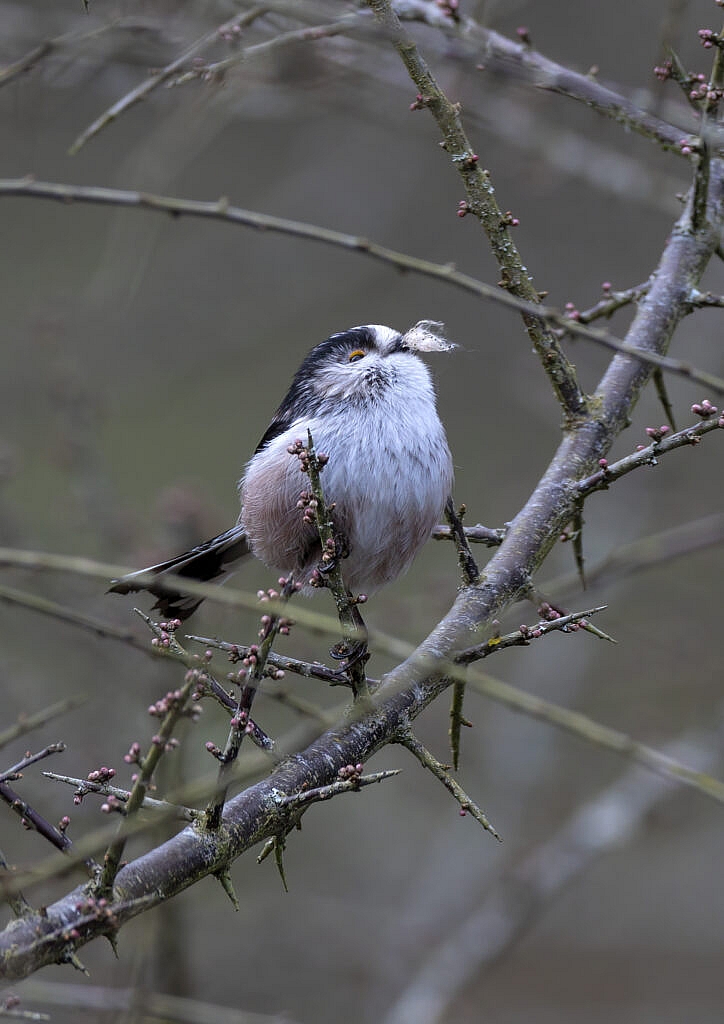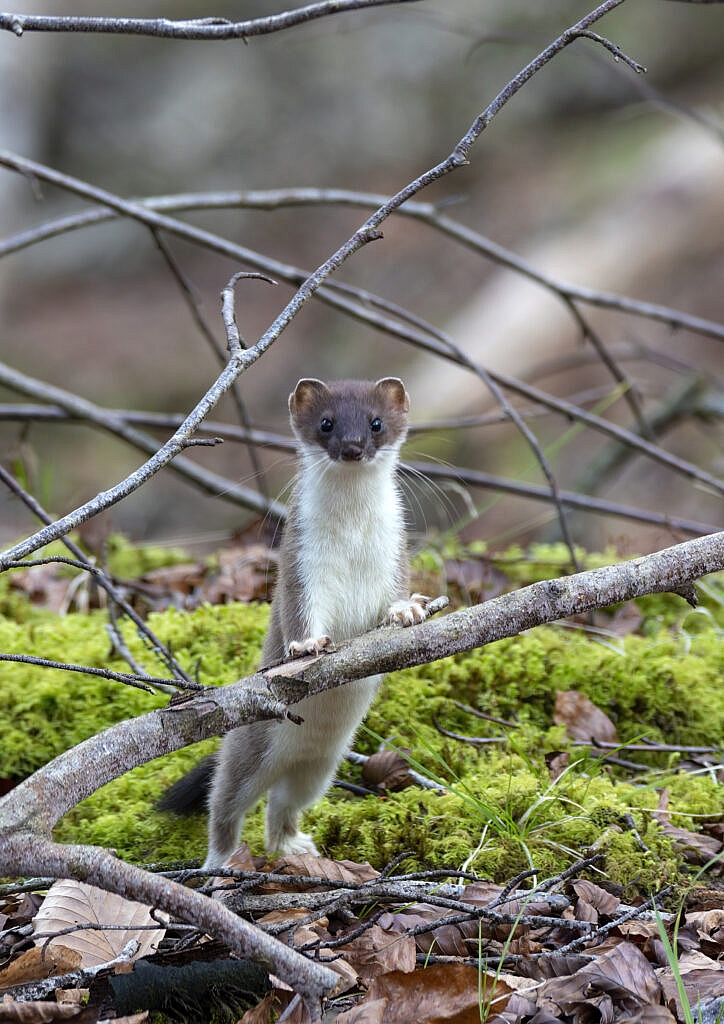My memory could be charitably described as ‘shocking’. So like many people, I rely on mnemonics to help me. But mine are always, for some reason, the opposite way around to the way you’d expect. On wiring plugs, I remember that Brown has got an “n” in it for neutral – so it isn’t, it’s live. It works really well – as long as you remember the last bit.
My mnemonic for telling weasel and stoats apart is that a “weasel doesn’t need an easel”. The tail of a stoat has a black tip, as if it carelessly left it dangling in a pot of paint. The weasel’s tail doesn’t. So clearly the stoat is a painter and needs an easel, while the weasel doesn’t. It’s so obvious I don’t know why everyone doesn’t remember it this way.
I got to put my mnemonic to use today while walking in Savernake forest. The day had started well, with the regular ‘chack…chack’ sound of a pair of long-tailed tits, who showed up on a branch right next to the path with spider silk in their beaks.

That’s a sure sign that they are nest-building, and a few minutes of quiet watching (from a safe distance) soon revealed it, under construction in the depths of a blackberry bush. By the time the leaves have emerged on the bush, the nest, an engineering marvel wrought from moss and lichen and spider silk, will be complete and perfectly hidden. Making the nest from moss and lichen is perfect camouflage, and the spider silk lends the whole thing an elasticity that helps it survive strong winds. Long tailed tits must be doing something right, as they are one of the few British species whose numbers are holding up.
But after the long tailed tits, the day became pretty unfulfilling, and I had just decided to walk back to my car and go somewhere else when a squirrel bounded down one of the large beech trees on the other side of the track. Except a second later I realised that it wasn’t a squirrel., but another similar-looking creature. Where squirrels tend to bound slowly, this thing was pogoing its way through the leaf litter like a slinky on steroids. It was a mustelid, one of that broad family of tube-shaped creatures that includes otters and pine martens. This one was either a stoat or weasel. But which? Mnemonic to the rescue: it had a bristly black tip to its tail, so it was a stoat. Not the first one I’ve seen, but certainly the first I’ve seen in Wiltshire.

Stoats and weasels are ephemeral creatures. You tend to see a brief glimpse and then never see them again. But this one hung around for almost twenty minutes, vanishing into and out of a series of small, ping-pong-ball-diameter holes in what was probably a long-rotted tree stump, now just a mossy mound on the ground. It was excitable, rushing into one hole and out of another, behaviour I’ve never seen before. I’ve seen weasels cache food in such places, so maybe this stoat had just mislaid a tasty snack. But this stoat was smaller than others I’ve seen, and is likely to be a female. And females give birth in the Spring. Astonishingly (and a little unpleasantly) female stoats can be mated at just 2-3 weeks old. They then undergo what is called ‘delayed implantation’, where the fertilised embryo is held in a form of suspended animation until the late winter, when it continues its development normally. So, given the very mild winter, this may have been a female with a litter of new kitts to feed waiting for her underground. But it’s more likely that this was just an old vole burrow that she was checking out thoroughly to see if any fresh voles had moved in. Either way, it was a privilege to see her. I will visit again in a few weeks and see if there are kitts anywhere to be seen. No all I need is a handy mnemonic to remember where the nest is. I’ll have get to get back to you on that one.


Social Profiles